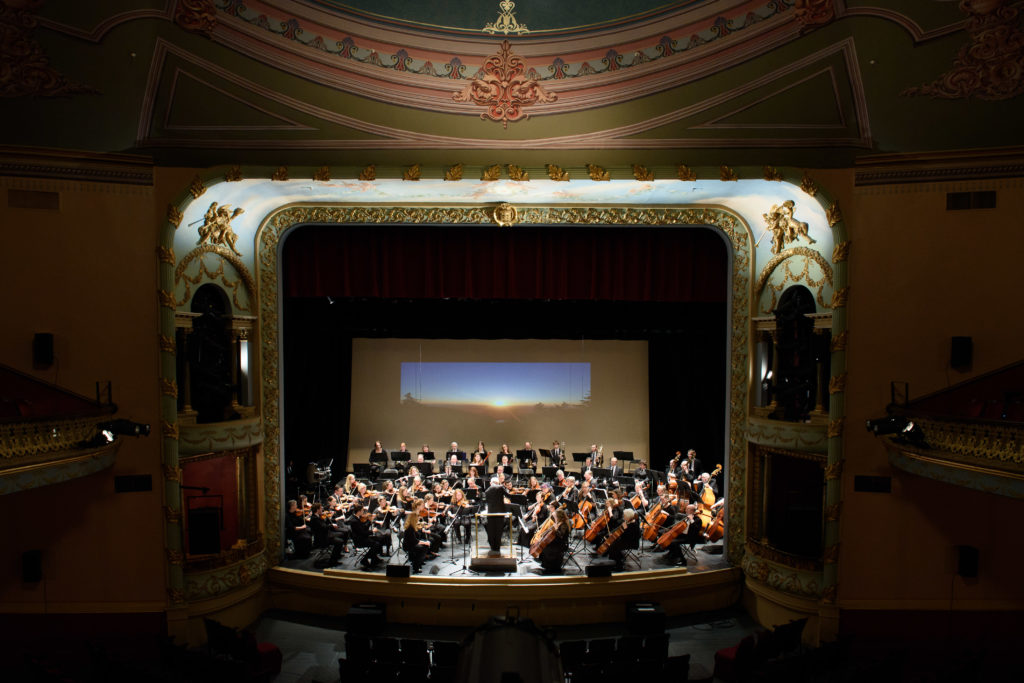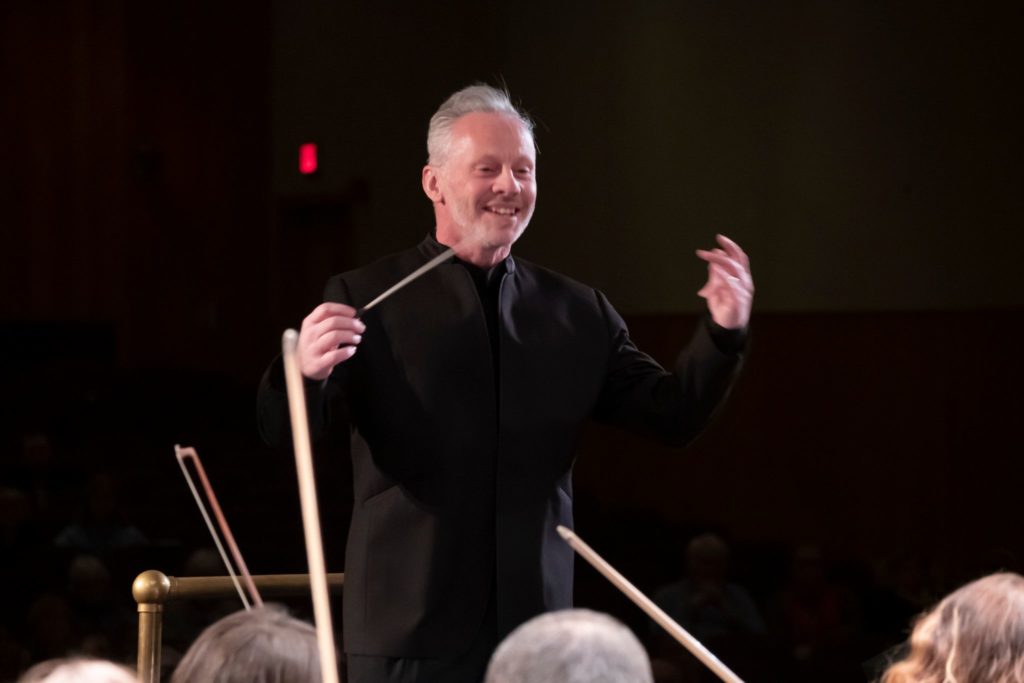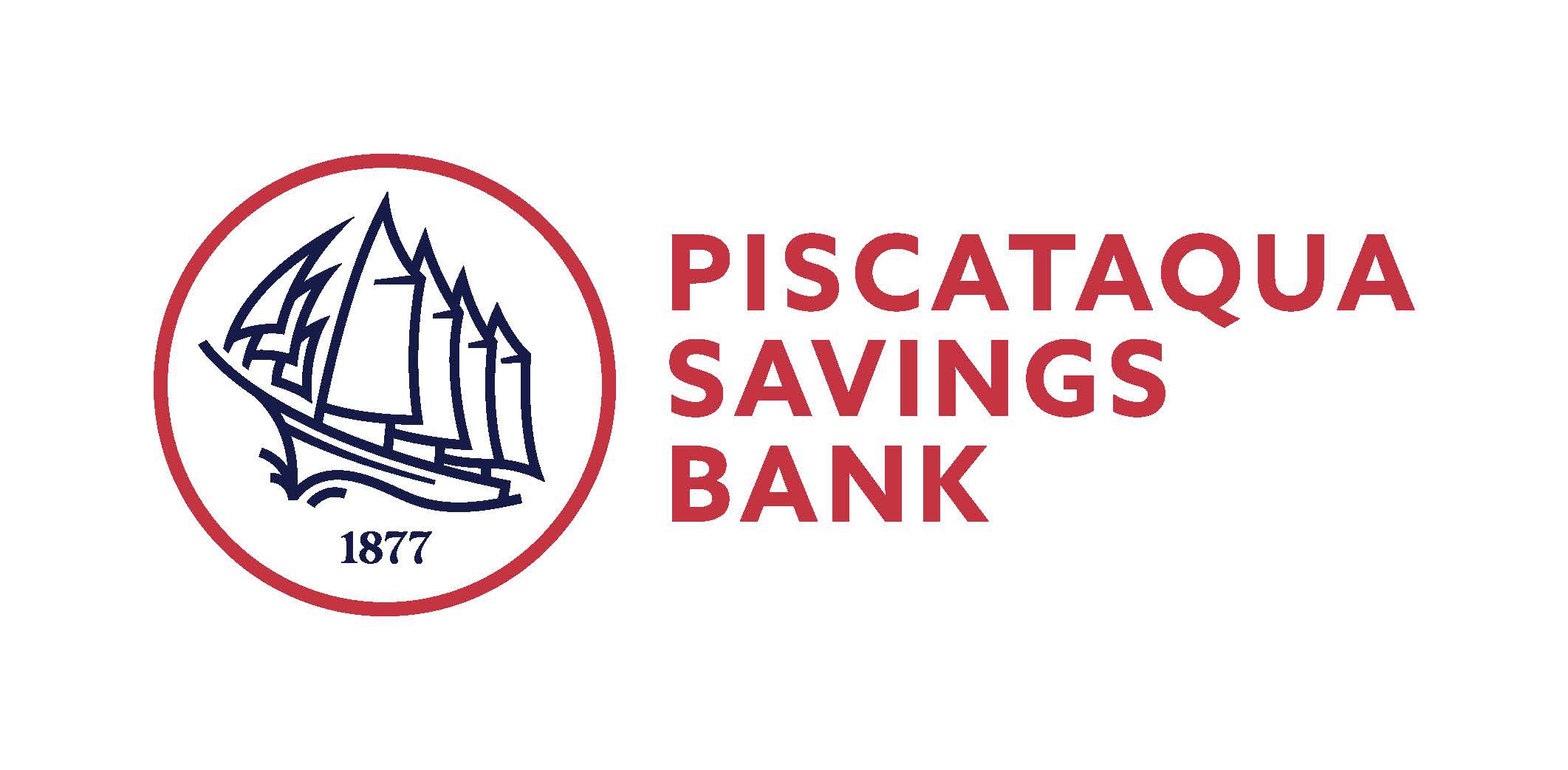A Symphony of Celebration: Tchaikovsky, Dvořák, and more
Scroll down for contents including program listing, notes and musicians.
Antonín Dvořák
Carnival Overture, Op. 92
Sergei Prokofiev
Piano Concerto No. 2 in G Minor, Movement I
with Benny Wang, piano
Pyotr Ilyich Tchaikovsky
Symphony No. 5 in E Minor, Op. 64
Presenting Sponsor
Based in Greenland, New Hampshire, Auger Building Company has been building and remodeling high-end custom homes and boutique commercial since 1984. Renowned for artisanship and mastery of complex projects, Auger Building Company is an award-winning team with projects featured in several national trade publications, including Remodeling Magazine where Ben Auger was selected as one of the country’s top 50 remodeling contractors. For Ben and his crew, every construction project is an opportunity to excel creatively and deliver exceptional and lasting value.
Sponsors
Message from the President

The Portsmouth Symphony Orchestra heads into our 26th season grateful to be part of the vibrant Seacoast community that supports the arts and culture organizations that bring us together.
The PSO’s mission is to entertain, educate, and encourage the audiences of today and tomorrow. Each year, we have the opportunity to build on past successes and to explore new ways to connect people to great classical music. This year, we are particularly excited to perform the jointly commissioned commemorative work, At This Point, written by Gregory Brown in honor of Portsmouth’s 400th anniversary. This reflective piece delves into the full range of Portsmouth’s history. Like the city from which we draw our name, the PSO has evolved and grown over the years. As we embark on our next 25 years and beyond, it feels appropriate to begin on a retrospective note.
Each season, the PSO relies on the contributions and investment of generous corporate sponsors, committed individual donors, community partners, and of course you, the audiences who purchase tickets and attend our performances. We are thankful for your collective support.
The PSO is fortunate to have a dedicated board of directors, an inspirational Music Director in John Page, and an array of talented musicians that bring our programs to life.
If this is your first PSO concert, welcome! If you are an annual subscriber, thank you for your continued support. We’re happy to see you again.
On behalf of everyone at the PSO, we hope you enjoy the season that we have prepared for you.
David Young
President of the Board of Directors
Message from the Music Director

Anchored by the commissioned work, At This Point by Gregory Brown, which celebrates Portsmouth’s 400th anniversary, the PSO’s 2023-2024 season is about reflection, exploration, and evolution.
In November, we pair Brown’s new work with two pieces by composers from traditionally underrepresented groups. The March concert provides an international counterpoint by exploring different facets of French musical creativity. In June, we’ll perform Tchaikovsky’s beloved Symphony No. 5, a masterpiece the PSO has not performed in more than a decade. And of course, in between we’ll celebrate the holidays together at our just-for-fun Pops! performances.
In addition to our mainstage concerts, we hope you’ll join us at our Family Matinees chamber music series. These are a wonderful way to connect music lovers of all ages with the wide repertoire that chamber music offers.
From a new work to an old favorite, this season promises to embody what all anniversaries are meant to do—allow for acknowledgment and appreciation of all that has come before and to renew our commitment to all that lies ahead.
We’re looking forward to making music together and are so happy you are here to share it with us.

John Page
Music Director
Program Listing
Carnival Overture, Op. 92 | Antonín Dvořák |
Piano Concerto No. 2 in G Minor, Op. 16with Benny Wang, piano
| Sergei Prokofiev |
—Intermission— | |
Symphony No. 5 in E Minor, Op. 64
| Pyotr Ilyich Tchaikovsky |
Artist Biography
Benny Wang, piano
 Benny Wang, 16-year-old pianist, is a 10th grader at Phillips Exeter Academy in Exeter, NH. Benny has been studying piano for 11 years and is a student of Silvana Sokolov-Grubb and Yana Reznik.
Benny Wang, 16-year-old pianist, is a 10th grader at Phillips Exeter Academy in Exeter, NH. Benny has been studying piano for 11 years and is a student of Silvana Sokolov-Grubb and Yana Reznik.Benny has received top prizes at numerous competitions, including first places at 2023 Elite International Music Competition and American Protégé International Piano & Strings Competition 2023. He was first place winner of the 2023 Lakes Region Symphony Orchestra Student Concerto Competition. Benny also got Honorable Mention at the 2022 International Young Artists Concerto Competition and twice performed as a soloist with the Chicago Arts Orchestra under conductors Vladimir Kulenovic and Conner Gray Covington. He has performed in Carnegie Weill Recital Hall, Buntrock Hall of Chicago Symphony Center, and the Harpa Hall of Reykjavik in Iceland.
Outside of music, Benny is passionate about competition math and computer programming. He also enjoys running for his school’s cross country team.
Musicians
Violin I
- Nicole Wendl
Concertmaster - Subaiou Zhang
Assoc. Concertmaster - Aniko Geladze
- Louise Kandle
- Rachel Swanson
- Lorna Ellis
- Sargis Karapetyan
- Paul Pinard
- Diana Bourns
- Becca Bannon
- Jill Good
- Megan Fedor
Violin II
- Ashley Offret*
- Susan Streiff**
- Sai-Ly Acosta
- Lauren Alter
- Jeffrey Sullivan
- Kristin Sullivan
- Ashley Freeman
- Susan Holcomb
- Evelyn Laux
- Lisa Hollis
- Samuel Lyons
- Abigail Sykes
Viola
- Theresa Jaques*
- Karen McConomy**
- Jan Heirtzler
- Caroline Drozdiak
- Wendy Keyes
- Mary Barba
- Maggie Chutter
- Thalia Dain
- Craig Peverly
- Michele Boulanger
Cello
- Gary Hodges*
- Larry Veal**
- John Acosta
- Kari Jukka-Pekka Vainio
- Fay Rubin
- Lauren Wool
- Kurt Villiard
- Priscilla Chew
- Zachary Larson
- Molly Goldstein
Double Bass
- Robert Hoffman*
- David Hirsch
- Nate Therrien
- Jason Noah Summerfield
- Joe Annicchiarico
Flute
- Aubrie Dionne*
- Erin Dubois
- Kylie Elliott
Piccolo
- Erin Dubois
Oboe
- Sarah Krebs*
- Jill Hoffman
- Catie Merrill
English Horn
- Jill Hoffmann
Clarinet
- John Ferraro*
- Santiago Baena Flórez
Bassoon
- Melissa Grady*
- Rick Shepard
Horn
- Orlando Pandolfi*
- Susan Williams*
- Gray Ferris
- Kathleen Keen
- Dirk Hillyer
Trumpet
- Adam Gallant*
- Mark Zielinski
- David Shepherd
- Jim Clark
Trombone
- Brandon Newbould*
- Ben Sink
- Phil Hyman
Tuba
- Crystal Metric*
Timpani
- Steve Cirillo*
Percussion
- Timur Rubinshteyn*
- Alyssa Ostrowski
- Mike Williams
Harp
- Sorana Scarlat
Perform with the PSO
The Portsmouth Symphony Orchestra seeks classical musicians in the community to audition for a place in the orchestra.
We invite all musicians, from professionals and educators to devoted amateurs and highly accomplished students to audition for a place in the orchestra.
Program Notes
Carnival, Op. 92, B. 169
Antonín Dvořák
Antonín Dvořák owed his initial recognition to Johannes Brahms, who singled him out in a composition contest, the prize of which enabled the talented young composer to spend time in Vienna studying composition further. Dvořák’s music bears some elements of resemblance to that of Brahms, for he wrote stunningly well in the similar genres of string quartets, sonatas, and symphonies. Unlike Brahms, though, he was a successful opera composer, and his Rusalka is known the world over. In fact, few of his contemporaries composed successfully in as many different genres as did Dvořák. Americans today, if they think of Czech music at all, it is that of Dvořák. They know little of the incredible musical wealth of Bohemia–from Smetana and Fibich to Ostrčil, Janáček, Hába, and Martinů. Dvořák is merely “first among equals” in the history of Czech music, and many more of the compositions of “the conservatory of Europe” need to reach our own concert stages. Carnival was written in 1891 and is a concert overture, that is, it is not part of any opera, but stands alone. Actually, it is the second of a trilogy of three concert overtures–the others being In Nature’s Realm and Othello–that collectively are called Nature, Life, and Love. The set is a general comment upon life and the human condition. Carnival, specifically, is not just a lighthearted depiction of a carnival, as it were, but a commentary upon the pace of life, itself–interrupted by a ominous “death” theme from his own recently composed requiem mass. Its tuneful melodies, masterful orchestration, and thrilling ending is perfectly characteristic of the composer’s musical style, and redolent of like riches found in his nine symphonies and numerous other orchestral works.
–Wm. E. Runyan
© 2015 William E. Runyan >>>
Piano Concerto No. 2 in G Minor, Op. 16
Sergei Prokofiev
The original version of Prokofiev’s Second Piano Concerto caused a minor uproar at its 1913 premiere: one eternally quotable heckler reportedly shouted, “To hell with this futuristic music! The cats on the roof make better music!” A contemporary newspaper account described audience members as “frozen with fright, hair standing on end.” Adding insult to injury, the only copy of the score was destroyed in a fire during the Russian Revolution, which meant that Prokofiev had to reconstruct the composition entirely by memory a decade after he first committed it to paper, making his Second Piano Concerto also, in a sense, his Fourth, as he explained to friends at the time.
We can’t compare the version we know today to the original, so we’ll have to trust Prokofiev’s judgment that the 1923 reconstruction was an improvement. By that point, he had played the concerto a few times in concert before setting it aside, so he knew its strengths and weaknesses. He had also finished his Third Concerto by that point—which remains far more popular than the Second, although nearly as demanding on a technical level and had matured as a stylist, relying less on shock-and-awe stunts and more on emotional depth and psychological complexity. He was a better contrapuntist, too, a point he emphasized when comparing the two iterations of the concerto. He also noted that he made “the form more graceful—less square.” Prokofiev debuted the new version in Paris, in May 1924, with himself as soloist and Serge Koussevitzky at the podium.
Prokofiev had finished the first version of the Second Piano Concerto as a 22-year-old undergraduate, a self-styled enfant terrible. He dedicated it to his closest friend at the Saint Petersburg Conservatory, Max Schmidthof, whom Prokofiev respected for his knowledge and discernment. Prokofiev recorded in his diary that he played parts of the concerto for Schmidthof: “He likes the third movement and especially the first movement cadenza. The Finale elicited vociferous approval; I had to repeat the opening theme three times.”
Sadly, not long after Prokofiev finished the concerto and before the 1913 premiere, Schmidthof took a train into a forest in Finland and shot himself, after mailing Prokofiev and one other person a copy of his suicide note. He was reportedly distraught over the ruinous debt that he had accumulated, which had left him and his mother destitute. “I am writing to tell you the latest news,” he announced. “I have shot myself….The reasons are unimportant.”
The Composer Speaks
“Following the violent concluding chord there was silence in the hall for a few moments. Then boos and catcalls were answered with loud applause, thumping of canes and calls for ‘encore.’ I came out twice to acknowledge the reception, hearing cries of approval and boos coming from the hall. I was pleased that the concerto provoked such strong feelings in the audience.”
—Prokofiev (from a diary entry describing the 1913 premiere)
“I come out to play in a more or less calm frame of mind. But I do not manage to stay calm during the most difficult parts: in the cadenza (specifically where I mark colossale), and at the beginning of the third movement, where the hands keep jumping over one another, I play badly. However, the rest I play well and with enthusiasm.”
—Prokofiev (from a diary entry describing a 1927 performance of the reconstructed concerto).
A Closer Listen
The Second Piano Concerto is notoriously difficult, so demanding from a technical perspective that many of the world’s finest virtuosos won’t attempt it. Even the great Martha Argerich has never performed it. Big and blustery, it comes in like a lion and goes out like a bigger, badder lion, strutting its apex-predator stuff all the while. But amid all the panic-inducing passagework and grand chordal intrigue, Prokofiev gives us subtle, often sardonic moments, too, infused with Gallic wit and neoclassical panache. Sometimes, as with the hypnotic hollow bell tones in the Finale: Allegro tempestoso, he almost seems to predict the tintinnabular music of Arvo Pärt.
Scored for an enormous orchestra and set in four movements instead of the conventional three, the Second Piano Concerto isn’t just a workout for overachieving concertizers, although it’s certainly that, insofar as it would be impossible for a second-rate pianist to pull off. Beyond the terrifying technical demands, it requires a great deal of interpretive finesse, not only from the soloist but also from each member of the orchestra. Take the second-movement scherzo, which goes from delicate Messiaen-esque excursions to pianistic proto-punk, pounding out a punishing onslaught of block chords and infernally fast runs in a mere six or so minutes of constant motion. Although the first version of the concerto was completed before the dedicatee’s tragic suicide, it’s tempting to interpret Prokofiev’s score as the raw transcription of the grief process, ticking off all of its excruciating, overlapping, and recurring stages, from rage to misery, denial and stunned acceptance. Whatever the impetus, this concerto sounds too harrowing to be a showpiece. Despite moments of unadulterated lyricism, as in the tender, folk-inflected secondary themes of the outer movements, it’s more exorcism than elegy.
-René Spencer Saller
Symphony No. 5 in E Minor, Op. 64
Pyotr Ilyich Tchaikovsky
Tchaikovsky completed six symphonies during his lifetime, the last three of which have long been concert staples. The three, while exhibiting both the tangible and intangible characteristics of the composer that endear him to music lovers everywhere, are each unique expressions of his musicianship and personality. Symphony No. 4 (with good reason associated with “fate”) came out of an especially troubled time in his life with regard to his ill-starred (and short) marriage—among other factors was his attempted suicide. Symphony No. 6 was, of course, his last one (he died of cholera nine days after its première), and its title bore the French equivalent of “pathos.” And its tragic pianississimo ending truly evokes the finality of his great personal anguish. So, where does that leave us with No. 5?
In some ways, we find ourselves in a similar kettle of fish. The sixth symphony was composed and premièred in 1888, when the composer was 48 years old, and it too–based upon the composer’s own testament–more or less is concerned with “fate.” He was already in contemplation of death: many close friends had recently died, he was in poor mental and physical health, and had made out his will in contemplation of his demise. But the preoccupation on fate in the fifth symphony is perhaps not the hammering fate of the fourth symphony, but rather a more acquiescing acceptance of what Tchaikovsky called “providence.” The first movement starts right out with the so-called fate motive, played by both clarinets, ominously down in their lowest register; this motive will be easily heard in all four movements, and is a strongly unifying element in the composition. The movement proper begins with a dark march—with a characteristic Tchaikovskian stuttering syncopation–initiated by solo clarinet and bassoon, accompanied by pizzicato strings. The whole movement centers around this theme, but there are others, most notably a winsome waltz-like theme. Although the movement moves through a variety of intense, dramatic (read loud) utterances, it ends in soft darkness—just as it began.
The second movement is perhaps the most well known of the four movements, owing to its use in a pop arrangement by Glenn Miller and others, shortly before World War II—luckily time has faded most of that particular memory. The melody is primarily a solo for the principal horn, and a glorious, beautifully spun out affair it is. A related idea for solo violin follows shortly. The middle of the movement generates considerable interest from its vivid harmonic surprises, a new theme in the clarinet, and general sense of unrest and instability. But then, the so-called fate motto from the first movement interrupts, and we’re back at a return to the lovely first theme, although with changed orchestration and a dramatic buildup of emotion before quietly subsiding.
There are those who opine that no one equaled Tchaikovsky in walzes—even the Strausses—and I concur. The third movement is a series of incredibly elegant waltzes that make you wish that we all still danced them. But before they start, a soft, but ominous series of chords in the strings lures you into thinking that the dark mood of the ending of the first movement will prevail. But a wonderful modulation brings us to the novel and beguiling key of D major. The waltzes commence. The middle of the movement provides some relief from the waltzes in the form of a short scherzo in duple meter, contrasting nicely with all the ONE-two-three of the waltz. It’s a frenetic affair, not so much unlike the suggestion of little rodents scampering around when they should be gracefully waltzing. The scampering continues for a while when the waltzes return, signaling the end of the movement—but not before the low clarinets menacingly interrupt for a moment with the motto that opens the whole symphony, and which we will hear in spades imminently in the last movement.
A sure-fire spiritual narrative in art during the romantic period—or any period, for that matter—is the journey from darkness to light, from defeat to victory, and perhaps death to transfiguration. Beethoven, Brahms, and other great composers wrote any number of works with this theme, and it is Tchaikovsky’s and ours in this symphony. The long introduction to the last movement is based upon the motto theme of fate, but now opens in E major, the happy key of redemption. But, victory cannot be won so easily, so the main movement returns to E minor to begin the battle, and Tchaikovsky works it out with a dramatic review of familiar materials, as we gradually find our way into the world of light. The victory is hammered out in the motto of fate by stentorian unison brasses, and a tumultuous gallop to the end wraps up the triumph.
–Wm. E. Runyan
© 2015 William E. Runyan >>>
Up Next
Donors
- Martha Fuller Clark
- Jameson & Priscilla French
- Clinton F. Miller, MD
- Donna Saunders & Michael Chubrich
- Josephine Lamprey (posthumously)
- Jessica McKeon
- Jeffrey & Penelope Gilbert
- Fay Rubin
- The Allayne & Douglas Wick Foundation
- Craig & Shirley Peverly
- Kate & David Murray
- Katherine Wells Wheeler
- Lawrence & Linda Connell
- Lodowick Crofoot
- Lorraine T. Keazer
- M. Christine Dwyer & Michael Huxtable
- Mike Schwartz & Sharyn Potter
- Mrs. Roger M. Doering
- Robert & Cyndi Bear
- Albert Lantinen
- Barbara Henry & Nancy Winkley
- Ellen G Saas
- Karen Furtado
- Lucinda Spaney
- Margot Doering
- QHT Inc.
- Sherrill Nixon
- Steve Cirillo
- Thomas Harford
- Anonymous
- Barbara & Robert Schultz
- Barbara Sweet
- Bruce Valley
- Catherine Anderson
Charles Doleac
David & Marion Ellis
Diana Bourns
Elaine & Steven Molleur
Elissa Margolin
Elizabeth Connell Nielsen
Fred & Barbara Engelbach
- John & Maureen Convery
Judith Howard & David Meikle
Kathleen Tutone
Lynn DiElsi
Stephen Chinosi
Wayne Shirley
- Alan Bennett
- Andrea Sullivan
- Ann Tarlton
- Anthony Codding
- Aubrie Dionne
- Bess4Sahara
- Black Birch
- Brian Fitzgerald
- Caroline & Nathanael Piper
- Carolyn Vinica
- Cliff Mommsen
- Cynthia & Michael Harvell
- David & Sarah Young
- David A. Taylor
- Dean & Sandra Quinlan
- Don & Mary Jo Briselden
- Edward & Janet Caylor
- Elaine X Fuller
- Evelyn Laux
- Frances Bechtold
- Frank Manter
- Fred Siegfried
- Gail Drobnyk
- Glenda & Ed Fischer
- Ivor Freeman
- James Rosenfield
- Jan & David Heirtzler
- Jane Page
- Janet Bilodeau
- Jo Ann B. Price
- Jo Ellen Thomas
- John & Eimer Page
- John & Susan Herney
- Judith Blake
- Kathleen D Rockwood
- Kathryn Ellis
- Kathy Rockwood
- Keith Lauder
- Kenneth Fuld
- La Belle Chocolat
- Leslie K Mast
- Linda Cunningham
- Lynn & John Pincomb
- Mara Witzling & Peter Cass
- Martha E Stone
- Marvin Fry
- Mary Lou McElwain
- Matthew Dowd
- Melissa Ambrose
- Melissa Grady
- Michael Thiel
- Mr & Mrs Richard F Topping
- Mrs. Louise Hirshberg
- Nancy Zadravec
- Paul & Linda Hamlen
- Peter Bowman
- Philip R Hepburn
- Prince/Bergh Family Fund
- Rachel & Nate Swanson
- Richard Mechaber
- Robert Westerberg
- Roy William Helsel
- Seth A Hurd
- Susan Brett
- Susan Moniz
- Susanne Veal
- Terrie Harman
- The McElroy Family Foundation
Board of Directors
- David Young, President
- Fay Rubin, Vice President
- Jeffrey Gilbert, Treasurer
- Jan Heirtzler, Secretary
- Lawrence Connell
- Beverly Giblin
- Melissa Grady
- Paul Lanzoni
- James Mulhern
- David Murray
- Craig Peverly
- Eric Salas
- Donna Saunders
- Rachel Swanson
Staff & Volunteers
- Caroline Amport Piper, Director of Communications
- Aubrie Dionne, Director of Outreach
- Erin Dubois, Operations Manager
- Jan Heirtzler, Librarian
- Craig Peverly, Equipment Manager
- Adam Gallant, Musician’s Coordinator
- Graphic Details, Graphic Design
- Paul Lanzoni, Development Committee Chair
- Rachel Swanson, Marketing Committee Chair
- James Mulhern, Nomination and Governance Committee Chair






